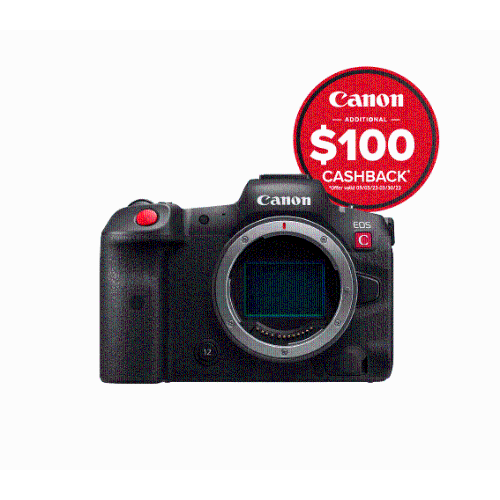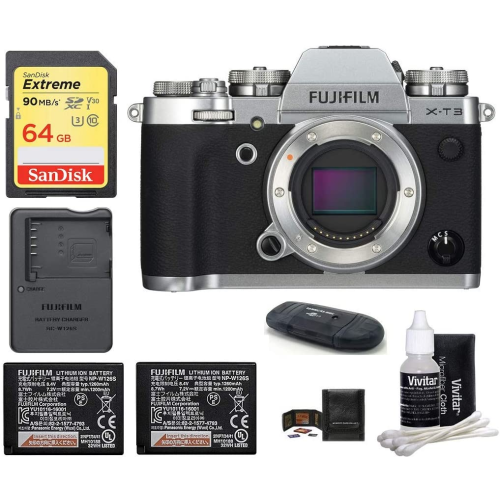



Canon EOS R5 C Mirrorless Cinema Camera
For all the wedding videographers, drone camera operators, and multimedia journalists who have professional photo still and cinema video production needs, get ready for a new type of shooting experience with the EOS R5 C Mirrorless Cinema Camera from Canon. The R5 C enhances a number of features in comparison to its siblings the R5 and C70, including 4K120 recording, HDMI RAW output, Canon Log 3 HLG/PQ support, unlimited recording time, a timecode port, Dual Pixel CMOS AF with eye detection, an active cooling system, a high-power LP-E6NH battery, 13 reassignable buttons, and a multi-function shoe for XLR adapters. The camera also retains the reliable features of those cameras such as Wi-Fi/Bluetooth, footage compatibility with DaVinci Resolve and Canon apps, an electronic RF mount, CFexpress/SD card slots, a similar button layout, and more. And all this is packed into a tiny 1.7 lb body that is just asking to become your go-to drone camera.Common Features & Technology as the EOS R5Canon's 45MP full-frame CMOS imaging sensor is at the heart of the EOS R5 C camera's superb image quality, which also leads the way for impressive 8K60 RAW cinematic video shooting.
·Focus and speed are paramount in the EOS R5 C camera, providing impressive still-image continuous capture at speeds of up to 20 fps
·Dual Pixel CMOS AF II capability, to track split second movements of even the most elusive subjects
·With 1053 Automatic AF zones, it is easy to photograph people with the use of Eye, Face, and Head Detection AF, or intuitively track the whole body, face, or eyes of cats, dogs, or birds with Animal Detection AF
·For those with the need for speed, Canon has also included still-image vehicle subject detection to assist with accurate tracking of cars and motorcycles
·Connectivity like 5 and 2.4GHz Wi-Fi and Bluetooth is also included for the transfer of still imagesVideo Control for the Dedicated Video ProfessionalAs soon as the EOS R5 C's main switch is moved to the "video" position, the familiar Cinema EOS menu system and interface take over. Expected high-level video features such as waveform monitors, video codec options, and extensive audio control become available, greatly expanding the EOS R5 C's video potential for the experienced camera operator or video content creator. During "photo" operation, menus are nearly the same as they are on the EOS R5 camera.Ergonomic EOS DesignThe EOS R5 C camera's body design is incredibly compact and lightweight. When paired with a Canon RF lens (or EF lens using the Mount Adapter EF-EOS R), it offers outstanding performance that fits easily and comfortably in your hand, making handheld shooting a breeze whether shooting video or still images. Its electronic viewfinder is optically extended, for eye-level viewing similar to the conventional EOS R5 camera, and it uses the same ergonomic grip design.CMOS Sensor and DIGIC X ProcessorThe 8K CMOS sensor and DIGIC X processor produce high-quality video at up to 8K60 resolution. Use of the Cinema RAW Light format with its high-efficiency mode enables internal card recording without an external recorder. The EOS R5 C camera supports HDR recording in Hybrid Log Gamma (HLG) and Perceptual Quantization (PQ) format, which helps ensure full color rendition and wide latitude with a great range from black to pure white, outstanding for the delivery of livestreams, broadcasts, and post-production projects.8K60 RAW RecordingCinema RAW Light in 8K is amazing for post-production grading and archiving, or MP4, which is optimized for faster online use. 5.9K in Super 35mm mode and 2.9K in Super 16mm mode are also available for internal recording to CFexpress cards. Cinema RAW Light video files have been optimized for better efficiency to achieve 12-bit recording in all frame rates. Thanks to three newly developed Cinema RAW Light modes (High-quality RAW HQ, standard-quality RAW ST, and Light recording RAW LT), users can select the RAW video mode according to their shooting needs. Lighter, smaller proxy video files can also be recorded while shooting 8K.Different File Formats and Simultaneous RecordingAlong with Cinema RAW Light, which provides light data sizes for RAW recording, the EOS R5 C camera supports MXF-based XF-AVC as well as the highly versatile MP4. The EOS R5 C camera is also capable of recording two independent video files simultaneously, such as Cinema RAW Light and MP4 at various resolutions including 4K and HD, as well as lightweight proxy files for various professional workflows. XF-AVC offers robust 10-bit 4:2:2 files in a .MXF wrapper for simple compatibility with non-linear editing systems (NLEs) and existing workflows.Internal Cooling Fan Enables Nonstop 8K60 RecordingThe EOS R5 C camera features a cooling fan built into the body, forcing out the heat from inside, enabling continuous and virtually limitless shooting of high-definition 8K60 video without interruption.Expanded Interface for Professional NeedsThe EOS R5 C camera provides a timecode input/output terminal for easy synchronization when shooting with multiple cameras and other interfaces. A cable protector is also included as standard to prevent cable disconnection or damage to the terminal if strong force is applied when connecting interface or HDMI cables.Multi-Function Shoe for Audio RecordingCanon's multi-function shoe with digital audio interface supports the optional TASCAM CA-XLR2d-C professional audio XLR microphone adapter for up to 4-channel audio. This optional accessory adds two full-sized XLR terminals with phantom power and shotgun mic mount, enabling digital 4-channel and 24-bit audio recording to meet professional video production needs.13 Full-Featured Assignable ButtonsThe EOS R5 C camera is designed with operational flexibility in mind, conforming to each individual professional workflow, including 13 marked, assignable buttons that allow for user-friendly customized operation.Up to 4K120 Slow and Fast Motion Recording Mode in 4:2:2 10-BitThe EOS R5 C camera can record High Frame Rate (HFR) movies at up to 120p at DCI/UHD 4K resolutions (4096 x 2160/3840 x 2160) in 4:2:2 10-bit without cropping the sensor. Great for shooting scenes full of fast-paced action, the EOS R5 C camera's fast and intuitive autofocus remains enabled even during HFR recording, making it ideal when shooting from a gimbal or drone, delivering outstanding focus accuracy at HFR or at common frame rates.Simultaneous Audio Recording Enabled with HFRUnlike some other cameras where audio is not recorded during HFR shooting, the EOS R5 C camera can record .WAV audio as a separate file from video, virtually eliminating the need for separate audio recording and delivering HFR video and audio files in one convenient device when shooting slow motion or fast motion video.Canon Log 3 Expands Expressive PossibilitiesThe EOS R5 C camera features Canon Log 3, which is found in many Canon cameras and works with multiple Canon EOS and Cinema EOS cameras. The wide dynamic range can be used for a wider range of grading after shooting. Canon Log 3 is a gamma that is designed for simple grading, such as tightening dark areas and adjusting tones. It carries on Canon Log's ease of use with less noticeable noise. It can also be used when shooting with other Cinema EOS system cameras such as the EOS C300 Mark III and EOS C70 cameras.Enhanced Image StabilizationEnhanced image stabilization is achieved through coordinated control when Canon's RF lenses with optical IS are combined with the EOS R5 C camera's electronic IS when shooting XF-AVC or MP4 formats. With an RF lens that has optical IS and the electronic IS in the EOS R5 C camera, coordinated control helps achieve the optimum hand-shake correction effects. This helps achieve better anti-vibration performance than with conventional IS-equipped EF lenses (using optional Mount Adapter EF-EOS R) and electronic IS together.Dual Pixel CMOS AF with iTR AF XCanon's Dual Pixel CMOS AF technology uses every pixel on the imaging sensor to detect focus, and also to capture actual image information achieving both high precision focusing and high image quality. With most Canon RF and EF lenses, AF for video can be carried out over approximately 80% of the vertical and horizontal area of the screen.
·Touch AF allows positioning an AF point by simply touching the LCD screen, in addition to quick manual positioning with the 8-way multi-controller on the rear of the camera.
·The camera features Eye AF/Head Detection AF, developed with the use of deep learning technology to improve subject tracking.
·It also
























 Line
Line Telegram
Telegram